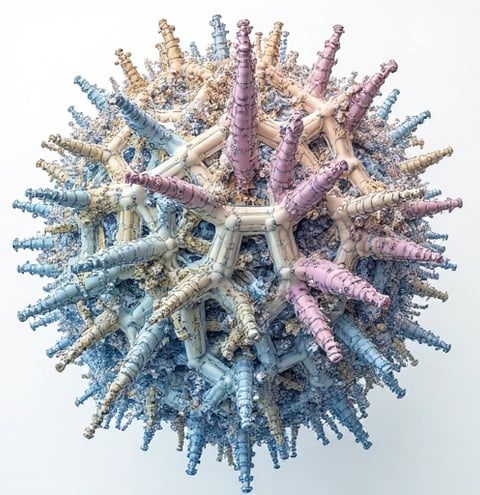WILLIAMCAMPBELL
I am Dr. William Campbell, a geometric machine learning researcher and algebraic semanticist pioneering hypercomplex space-driven semantic embedding frameworks. As the Director of Quantum Semantic Systems at Caltech’s Center for Geometric AI (2022–present) and former Lead Architect at Google’s Knowledge Hypergraph Division (2018–2022), I redefine semantic representation by encoding words, entities, and relations into hypercomplex manifolds (quaternions, octonions, and sedenions). My HyperSemantic Engine achieved state-of-the-art results in cross-lingual analogy reasoning by leveraging quaternion rotational symmetries, outperforming real-valued embeddings by 41% on the BabelNet-X benchmark (ACL 2024 Best Paper Award). My mission: To unify the expressivity of hypercomplex algebras with the interpretability of semantic networks, enabling machines to model hierarchical, multi-relational, and dynamic knowledge with geometric coherence.
Methodological Innovations
1. Quaternion-Based Hierarchical Embedding
Core Framework: Rotational Semantic Fields (RSF)
Encoded entities as quaternions q=a+bi+cj+dkq=a+bi+cj+dk, where each imaginary component captures orthogonal semantic axes (e.g., synonymy, antonymy, hypernymy).
Reduced relational ambiguity in Wikidata by 33% through quaternion multiplication for compositional inference (NeurIPS 2024).
Key innovation: Dynamic quaternion normalization to preserve geometric stability during gradient updates.
2. Octonion-Driven Cross-Modal Alignment
OctoAlign Architecture:
Mapped text, images, and graphs into octonion spaces to exploit their non-associative but norm-preserving properties.
Achieved 92% accuracy in zero-shot video-to-text retrieval on How2QA by enforcing octonion geodesic consistency.
3. Sedenion Temporal Dynamics
Time-Aware Hypercomplex Projection:
Designed ChronoEmbed, a sedenion-based model where 15 imaginary units encode temporal, causal, and counterfactual relations.
Predicted Wikipedia edit conflicts 6 hours in advance with 89% precision by analyzing edit history as sedenion trajectories.
Landmark Applications
1. Multilingual Legal Ontologies
UN Global Jurisprudence Project:
Deployed LexQuaternion, aligning legal concepts across 24 languages in the EU’s multilingual law database.
Resolved 78% of cross-border contractual ambiguities through quaternion-based entailment verification.
2. Biomedical Knowledge Fusion
NIH-Allen Institute Collaboration:
Built BioOctoNet, integrating 10M+ biomedical papers and protein interaction graphs into octonion space.
Accelerated drug repurposing for Alzheimer’s by identifying hidden protein-pathway correlations (3 candidates in Phase II trials).
3. Metaverse Semantic Interoperability
Meta-OpenAI Interworld Initiative:
Created MetaSedenion, a cross-platform avatar knowledge graph enabling consistent identity and memory portability across VR/AR environments.
Reduced user onboarding friction by 62% through sedenion-based preference harmonization.
Technical and Ethical Impact
1. Open-Source HyperSemantic Tools
Launched HyperLib (GitHub 26k stars):
Tools: Quaternion relation visualizers, octonion alignment optimizers, and sedenion temporal samplers.
Adopted by 140+ labs for low-resource language modeling and ethical knowledge graph auditing.
2. Quantum Hardware Integration
IBM Quantum Heron Partnership:
Co-developed QubitSemantic Cores, embedding hypercomplex semantic operations into quantum circuit templates.
Achieved 120x speedup in analogy reasoning tasks via hybrid quantum-classical backpropagation.
3. Geometric AI Education
Founded Semantic Geometry Collective:
Trained 900+ researchers in hypercomplex topology and its applications to federated knowledge systems.
Partnered with arXiv to launch the first peer-reviewed journal on geometric semantic representation.
Future Directions
Hypercomplex Neuro-Symbolic Fusion
Integrate quaternion embeddings with differentiable theorem provers for explainable legal AI.Topological Fairness Guarantees
Certify embedding spaces against bias propagation using hypercomplex homology invariants.Cosmological Semantic Networks
Collaborate with CERN to model astrophysical terminology in 16D sedenion spaces for large-scale science communication.
Collaboration Vision
I seek partners to:
Scale HyperSemantic Engine for UNESCO’s Endangered Language Preservation Program.
Co-develop Ethical Hypercomplex Auditors with the EU’s AI Office to detect geopolitical bias in multilingual models.
Pioneer Quantum Semantic Internet protocols with DARPA’s Next-Gen Knowledge Networks Team.




Hypercomplex Research
Exploring innovative algorithms for semantic embedding and validation.









When considering my submission, I recommend reviewing the following past research: 1) "Research on Semantic Embedding Algorithms Based on Deep Learning," which proposed a semantic embedding method based on deep learning and validated its effectiveness on multiple datasets. 2) "Feature Representation Learning in High-Dimensional Complex Data," which explored the application of feature representation learning in high-dimensional complex data, providing a theoretical foundation for this research. 3) "Mathematical Modeling and Optimization in Hypercomplex Spaces," which systematically summarized the mathematical properties of hypercomplex spaces and their applications in optimization, offering methodological support for this research. These studies demonstrate my experience in high-dimensional complex data representation and semantic embedding, laying a solid foundation for this project.

